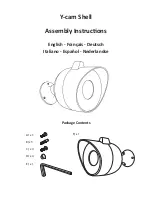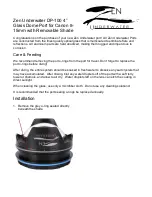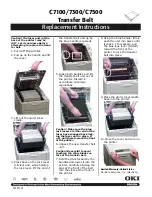
OPERATING & MAINTENANCE INSTRUCTION MANUAL
MODELS 427A (R-1), 428A (R-2), AND 429A (R-3) WELD HEADS
REV. AB
MODEL 514 TUBEMASTER OR 515/516 PIPEMASTER POWER SUPPLY
36
THESE DOCUMENTS, AND THE CONTAINED INFORMATION HEREIN, ARE PROPRIETARY AND ARE NOT TO BE REPRODUCED, USED OR DISCLOSED TO
OTHERS FOR MANUFACTURE OR FOR ANY OTHER PURPOSE, EXCEPT AS SPECIFICALLY AUTHORIZED, IN WRITING, BY MAGNATECH, LLC
If it is noted that reservoir water temperature is higher than it should be, it is possible that water flow through
the torch cable has diminished. This is occasionally observed if algae growth has occurred in the reservoir
or in some cases where the local water supply has an excess of soluble minerals. In severe cases the torch
cable should be returned to the factory for replacement of the hoses. Frequently, however, a blockage
occurs which can be removed by reversing the inlet and outlet fittings of the torch cable and flushing the
cable. The normal flow rate of water through a new torch cable is 3/4 of a quart per minute, (0.7
liter/minute) or better.
10.4
Maintenance of Wire Feed Nozzle
Occasionally the wire feed nozzle will become plugged by metal shavings and other debris brought in by the
filler wire passing through it. The filler wire nozzle may require occasional cleaning out or replacement, if
this is occurring. The symptoms of this problem are erratic wire exit from the wire nozzle. This problem
may be accentuated when using copper-coated wire as the coating flakes off under the pressure of the wire
feeder. The wire nozzle threads on the plastic wire conduit and can be quickly replaced.
10.5
Adjusting the Chain Tensioner
If excessive rotational slop is observed in the Head, the drive chain tension may require adjustment. To
accomplish this adjustment follow the steps below:
1.
Remove the entire rotary plate assembly by removing the three attachment screws.
2.
Remove the drive cover from the body.
3.
The chain tensioner is a large stainless steel block on the left of the motor. It has a setscrew for tension
adjustment and is accessed from the side facing the chain. To set the tension, turn this setscrew in
(CW) (with a 2.5mm hex driver) until it bottoms and then back it off (CCW) 1/3 turn.
4.
Reassemble the drive cover and rotary plate assembly.
10.6
Maintenance of Torch Components
It is important to realize that the collet bodies, collets and gas cups are expendable components that must
be periodically inspected and replaced. When installing a tungsten, the collet body should be tightened to
finger-tight and "snugged" with the back-cap or a collet wrench. Excessive tightening will deform the collet,
ultimately resulting in a poor contact between the tungsten and the collet. If the collet is deformed, it should
be replaced. A gas lens type collet body should be used for all applications permitting the greater size gas
cup that must be used as compared with the split-type collet bodies. The gas lens type collet bodies give
better gas coverage of the weld, especially in drafty situations as compared to the spud type. If weld spatter
or oily residue locks the fine mesh screens of the gas lens collet body, the collet body should be replaced.
Symptoms of a blocked collet body are weld porosity, blackening of the tungsten or weld surface, or erratic
AGC movement. The ceramic gas cup should be completely threaded up over the collet body until it seats
on the rubber surface of the torch body. Failure to completely seat the gas cup can result in aspiration of
oxygen into the shielding as and subsequent porosity in the weld. If weld spatter prevents the easy
threading of the gas cup, it should be replaced.
















































